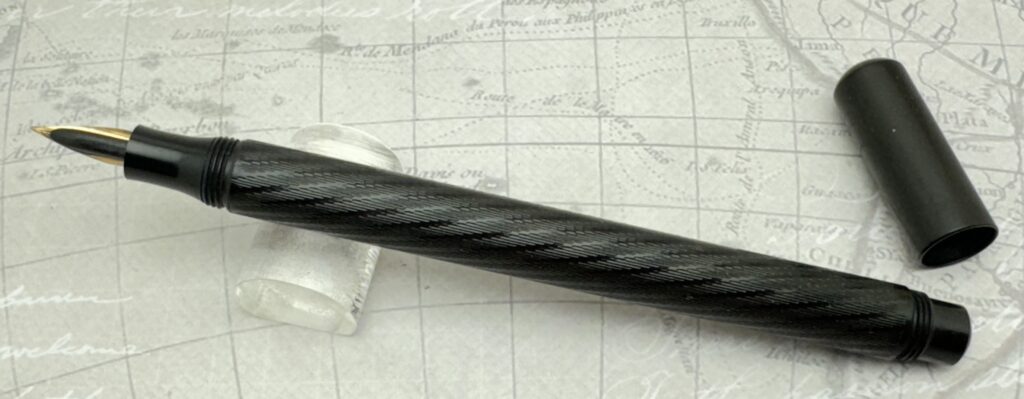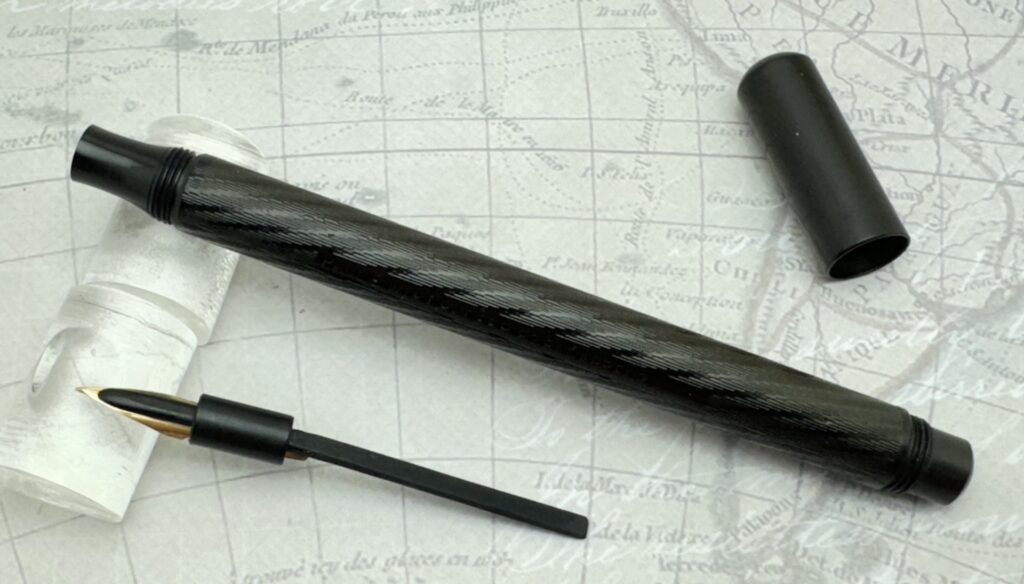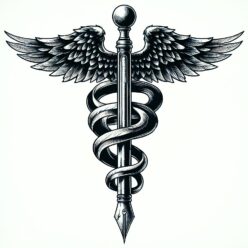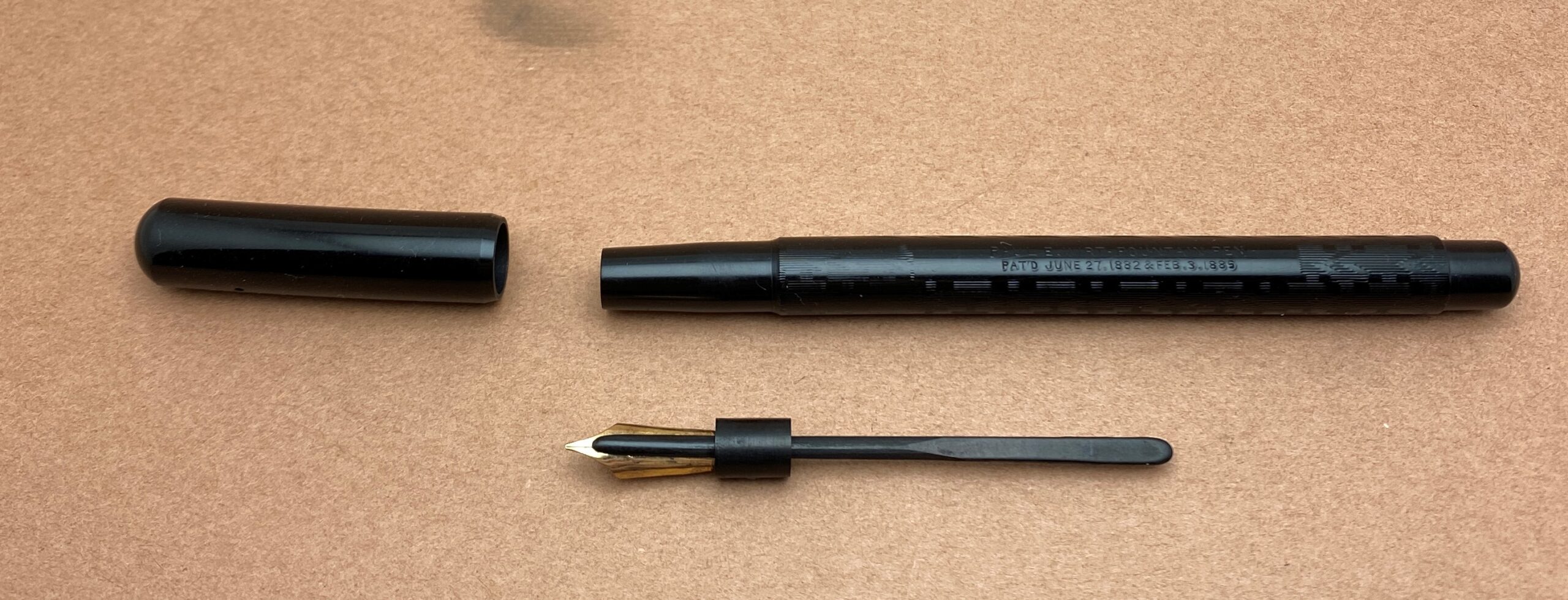Two styles of Wirt jointless fountain pens are pictured and described, with links to a third. Keep scrolling…
The first Wirt jointless pen came to me from another fan of very early fountain pens. He saw no way to open it, and neither did I. I examined it from time to time to try to figure it out. There is no joint anywhere on the outside. On a few occasions, I even tried some gentle heat and twisting both at the section and the posting end in case I just was not seeing the joint. Looking into the section with the nib removed, it resembles any other Wirt overfeed section with a narrow central aperture and small slits to hold the side of the nib shank. However, the feed itself is too wide on the inside to just pull it out the central opening. There had to be some way to open it to get the feed in.
During the long months of COVID, I set upon this mystery again. I made a short right angle hook/probe to probe the inside of the pen for clues, feeling nothing but a smooth interior. Finally, I tried to hook the back of the central portion of the section (something I had attempted before), and this time it budged. It took a bit of working it, pulling one side, then the opposite, and eventually a plug came out of the section. While it is too late for me to make this long story short, once the inside of the barrel was cleaned of ink, and the plug itself was cleaned, the assembled nib and feed can be pulled out of the section and replaced much like a Parker Jointless pen.
There is no Wirt patent for this design and it does not seem to have been in broad production. After posting this to a Facebook Early Writing Instruments group, I was made aware of another Wirt Jointless with a better design. This one, described and pictured in David Nishimura’s blog, has an outer flange, making it impossible to over-insert the nib/feed unit. As David pointed out, it is unclear if it was licensed from Parker or if Wirt was just trying something out.
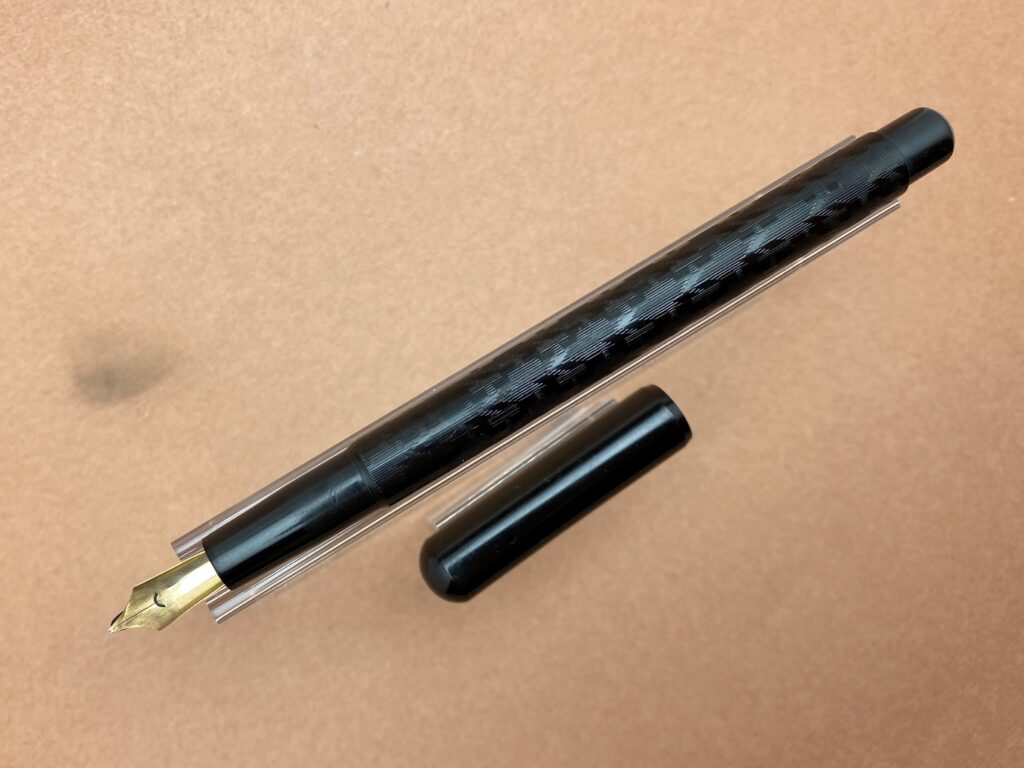
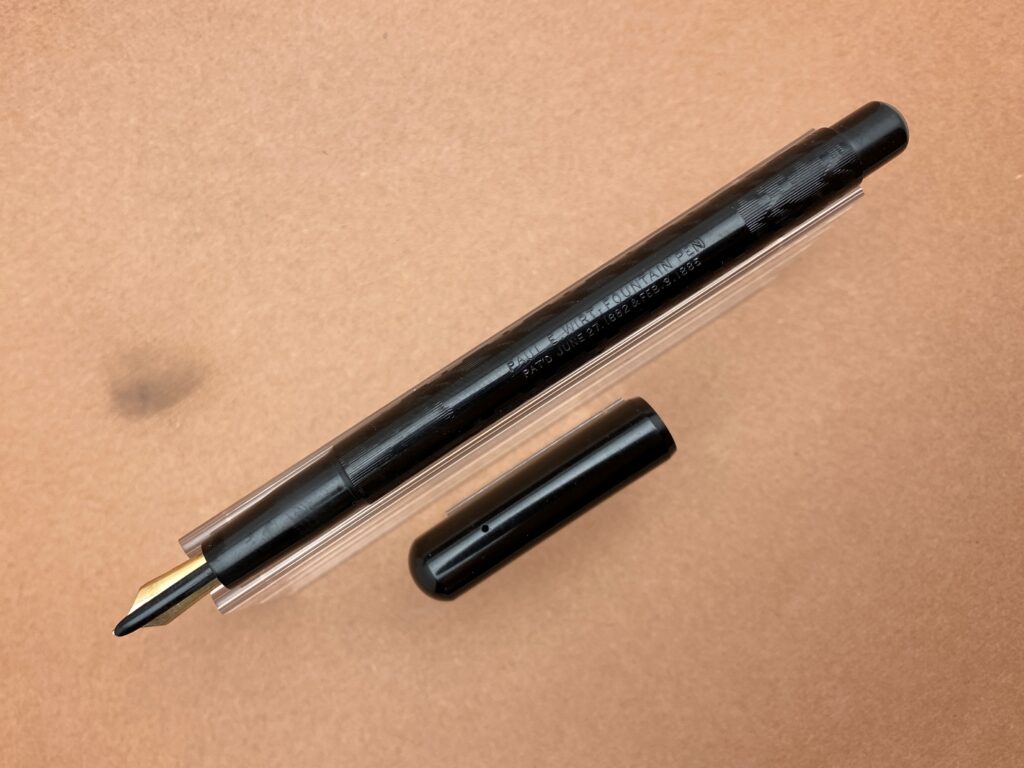
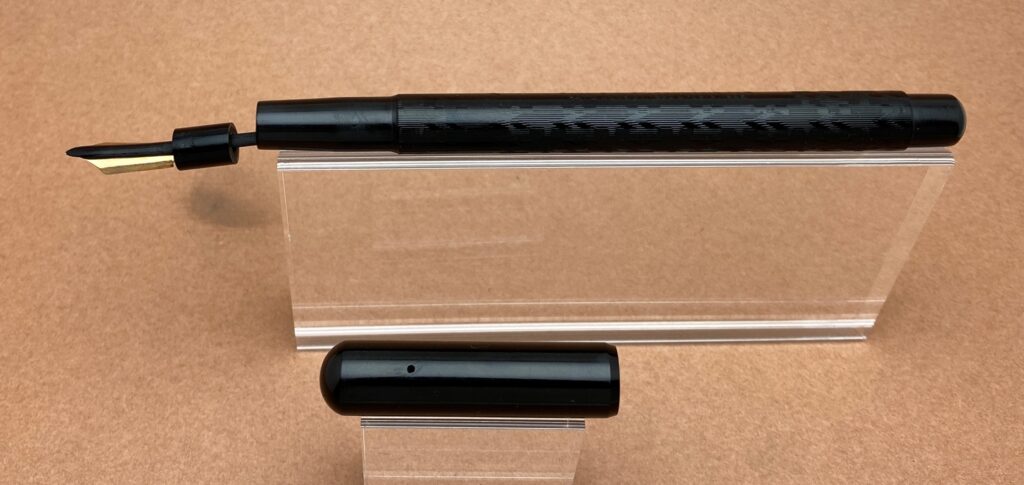
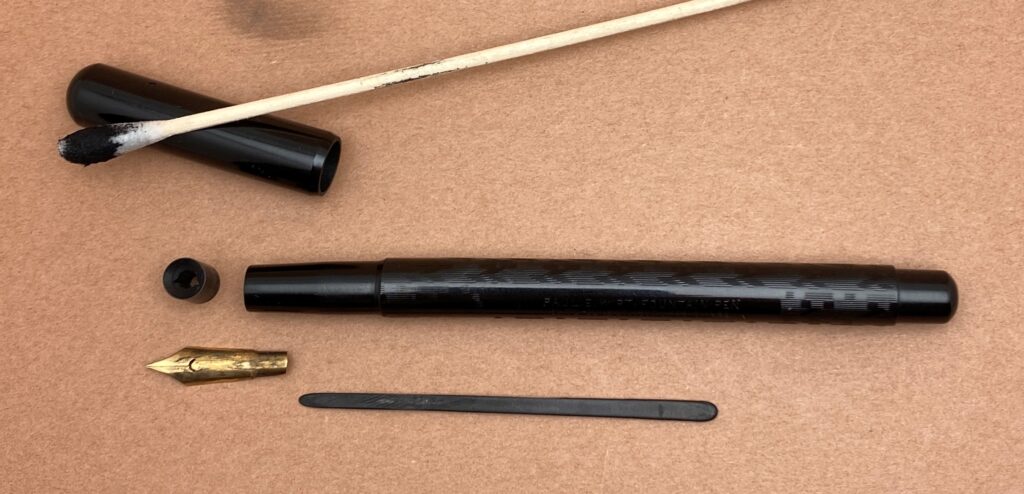
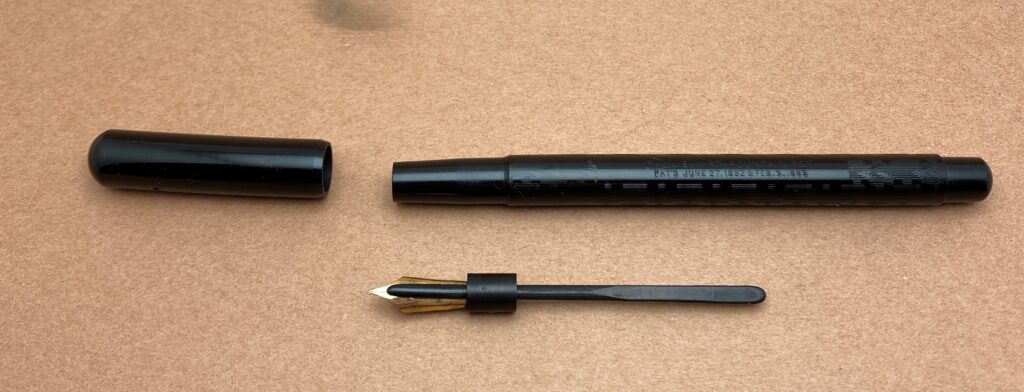
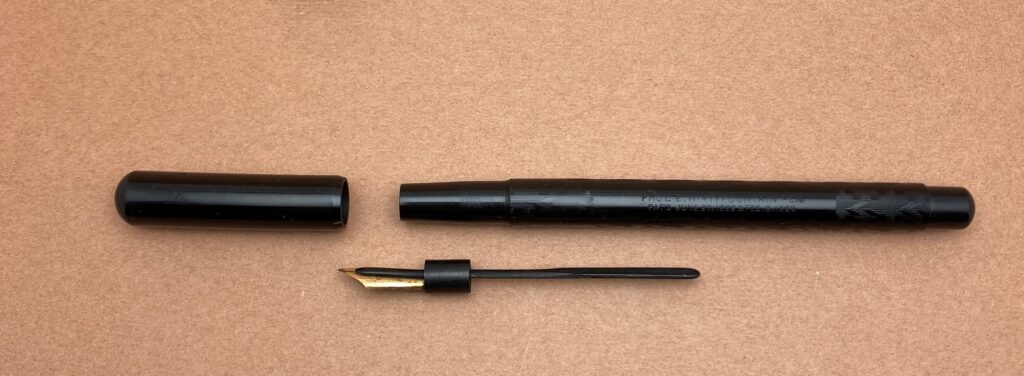
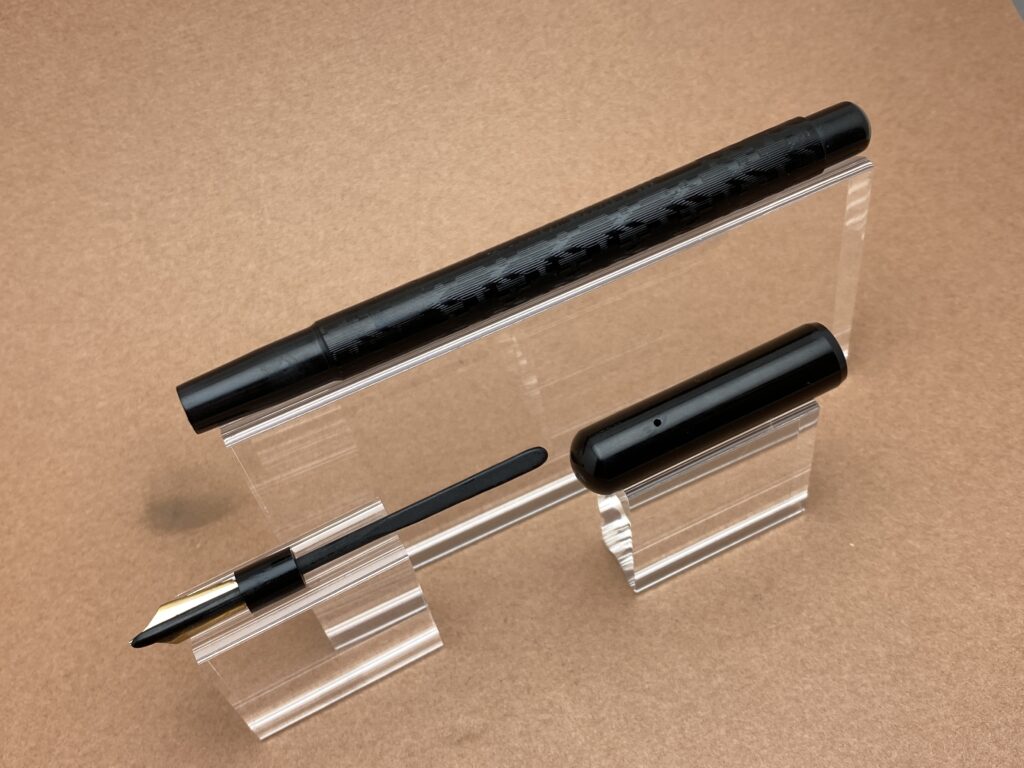
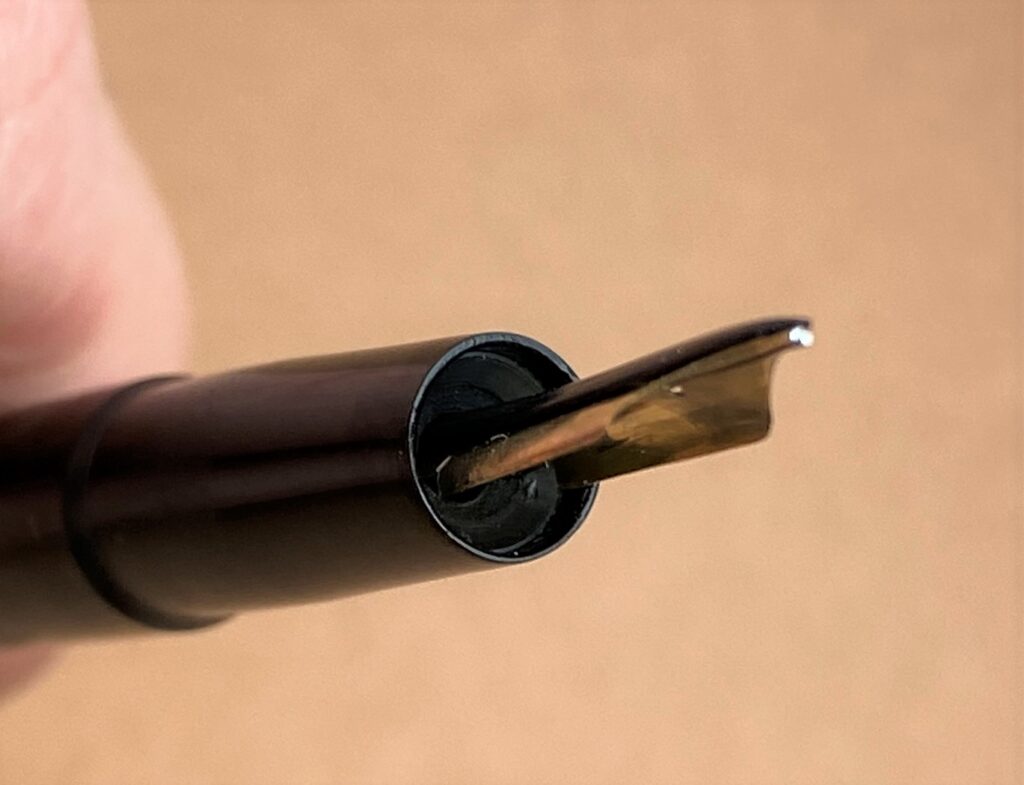
January 2024, I found another Wirt jointless design among the pens in a Wirt collection I acquired. There is a long flat piece of material inside thar runs the length of the barrel and prevent the nib unit from being pushed in too far. It also is a safety screw cap with an odd short cap, inner cap, and threads on the posting end.

